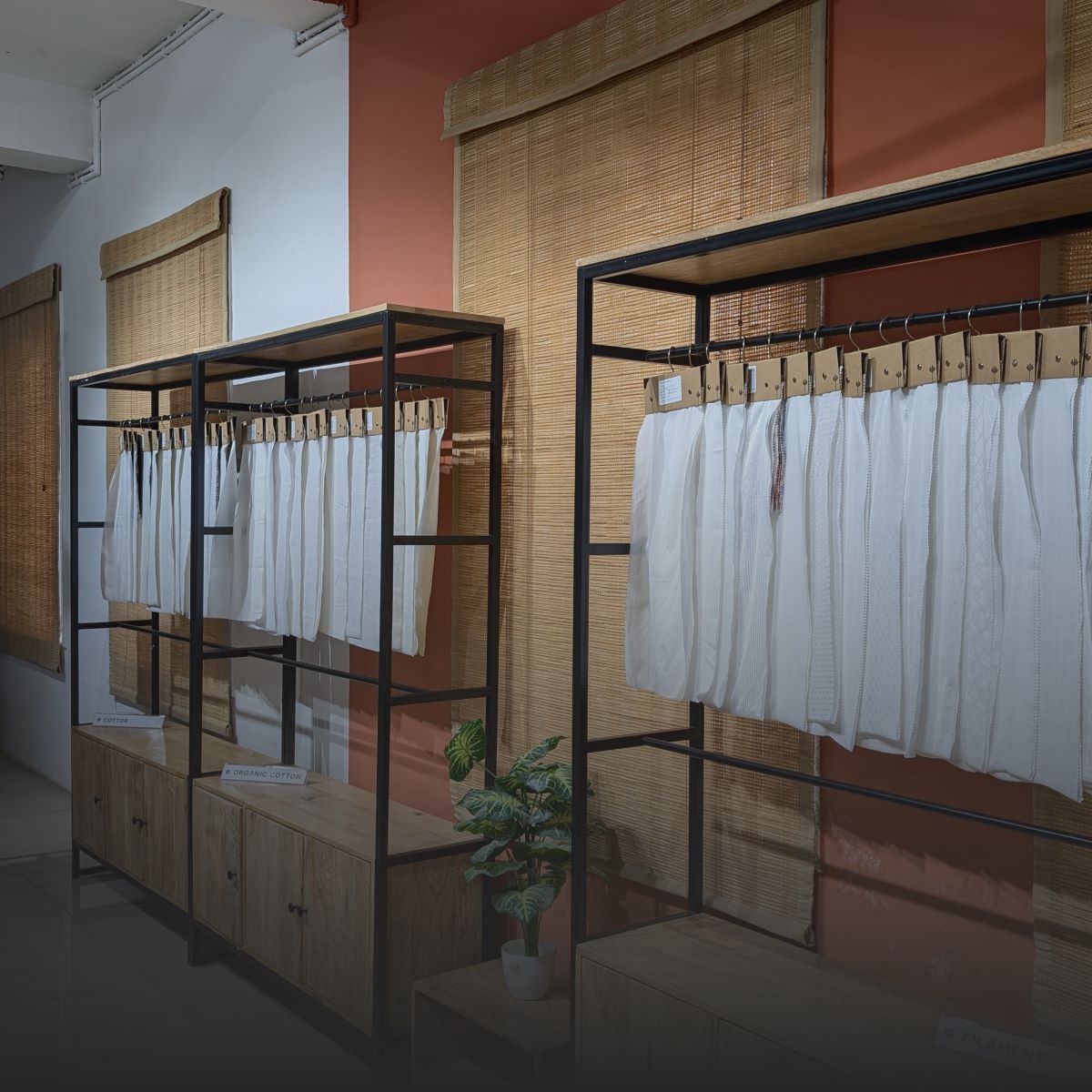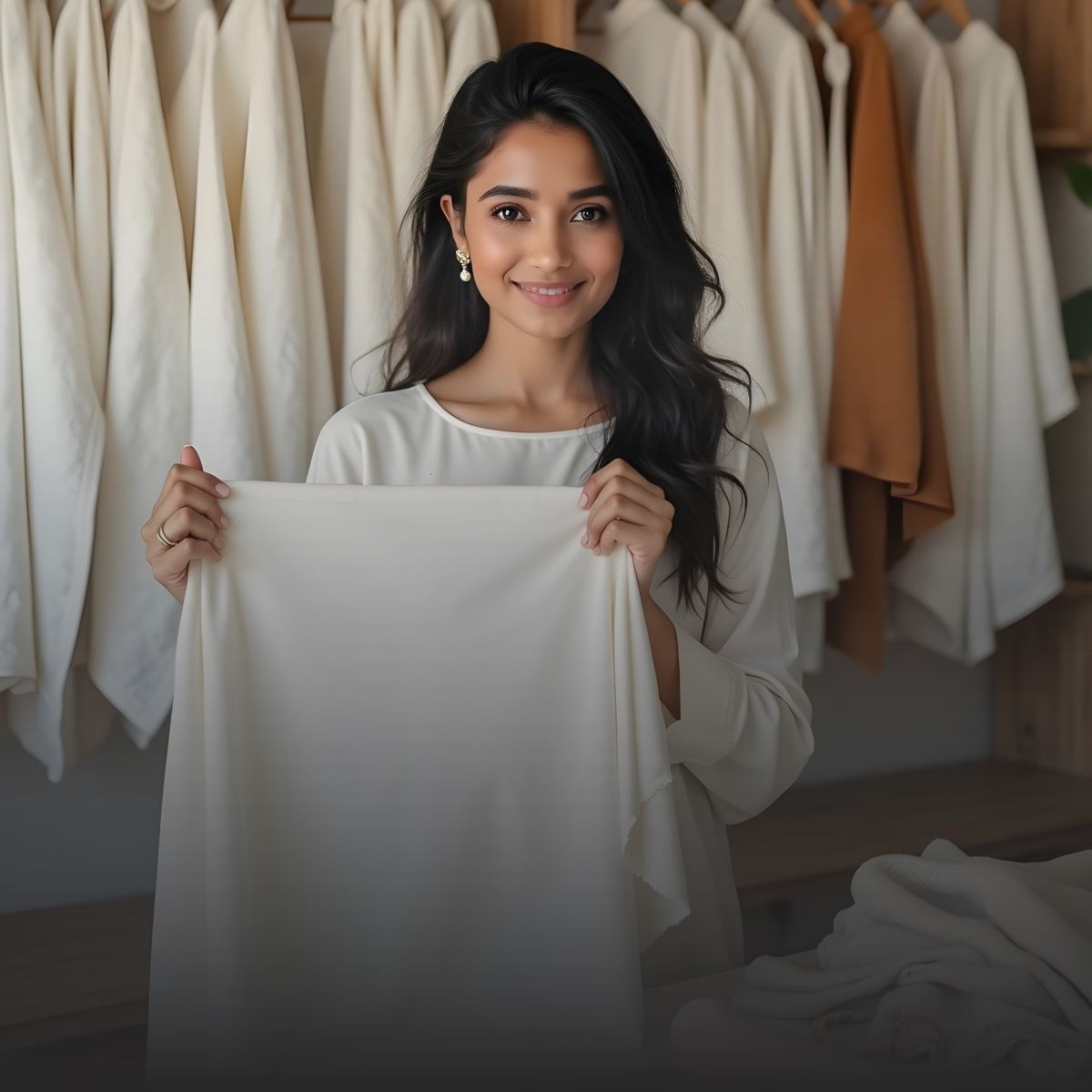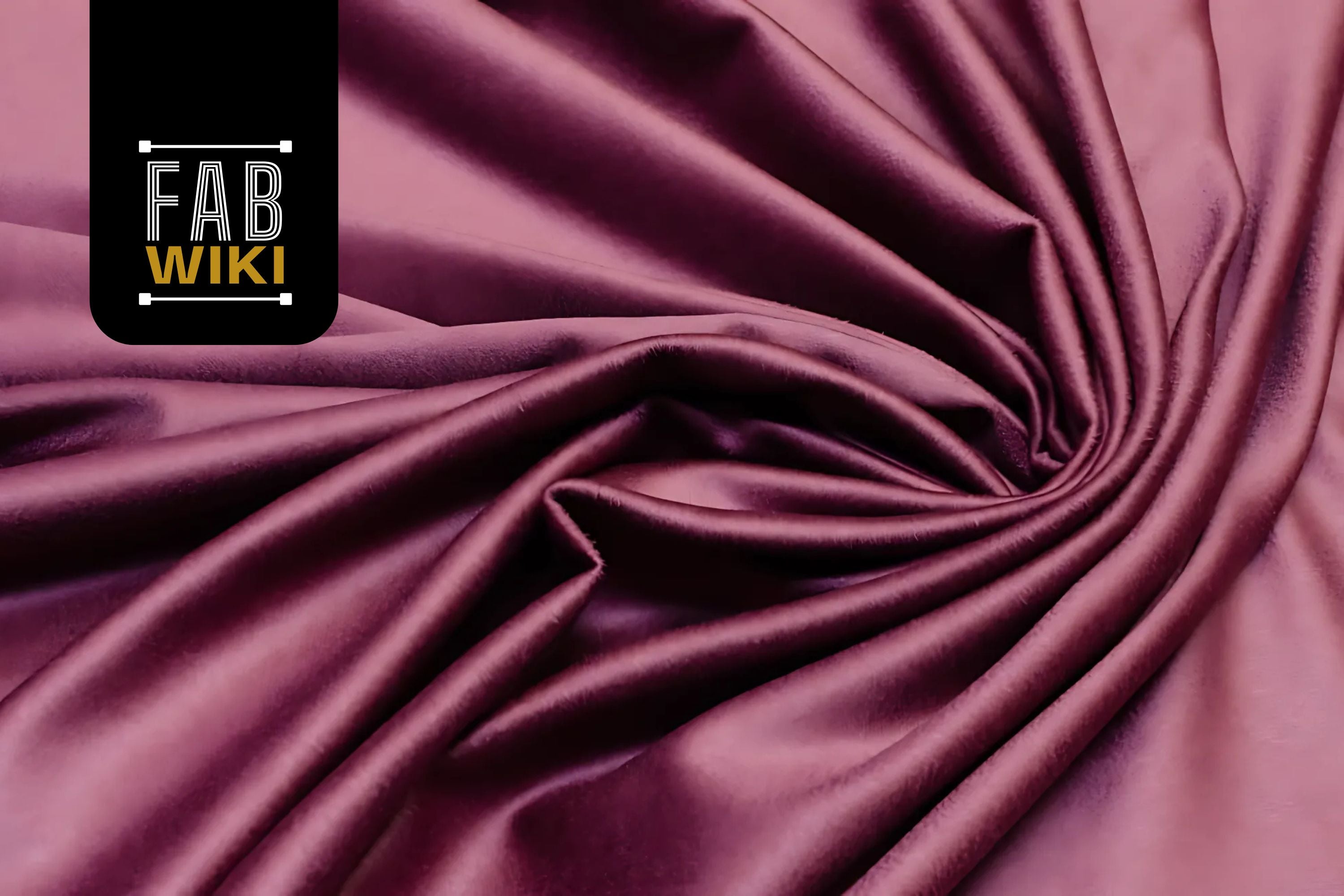Introduction to Crush Fabric
What is Crush Fabric?
Crush fabric is a type of textile that has been permanently textured to create a crinkled or wrinkled surface. This effect is achieved by applying heat, pressure or twisting techniques to the fabric, often while it's damp. It can be produced using various materials such as cotton, silk, polyester or velvet, resulting in a rich, textured look that adds depth and character.

Why is Crush Fabric Visually Appealing?
- The uneven texture creates a play of light and shadow, giving the fabric dimension and movement.
- It eliminates the need for additional design elements like pleats or gathers, making it efficient and eye-catching.
Where is It Commonly Used?
- Widely used in garments like tunics, dresses, ethnic wear and scarves.
- It is also popular in soft furnishings like drapes and cushion covers that benefit from a relaxed yet stylish appearance.
Why is It a Practical Choice?
- Naturally hides wrinkles, making it ideal for travel and everyday use.
- Low maintenance — no ironing required.
- Easily enhanced with mill dyeing, yarn dyeing or digital printing for custom aesthetics.
History and Evolution of Crush Fabric

When did crush fabric become popular?
-
Crush fabric became more noticeable in the fashion industry during the late 20th century, especially in the 1980s and 1990s.
- During this time, designers started using textured fabrics to bring a fresh look to everyday wear.
- The fabric’s natural-looking wrinkles gave clothing a relaxed and creative feel.
Why was this fabric embraced by designers?
- Texture became an important part of how clothes looked and felt.
- Instead of smooth and polished surfaces, there was growing interest in depth, softness and flow.
- Crush fabric offers these qualities without complicated tailoring.
How did technology help in making crush fabric?
- New techniques made it easier to apply permanent texture to different kinds of fabrics.
- Processes using heat, twisting or pressure were developed to create long-lasting wrinkles.
- These methods made it possible to produce crush fabric at scale on materials like cotton, polyester and silk.
Key milestones in its evolution
-
1980s: Gained attention in casual wear and experimental fashion.
-
1990s: Became a common feature in ethnic and festive Indian clothing.
- 2000s and beyond: Used in both modern fashion and craft-based fabrics, with options for yarn-dyed or digitally printed versions.
Characteristics of Crush Fabric

What makes crush fabric different from other materials?
- The key feature of crush fabric is its intentionally wrinkled or crinkled texture. This is not accidental — the texture is created through controlled mechanical or chemical processes that shape the surface while the fabric is still in a flexible state.
- The result is a permanent, irregular texture that gives the fabric its unique visual and tactile appeal.
What types of materials are used to create crush fabric?
- Crush fabric is not limited to one type of fiber. It can be made from a wide range of bases, including:
- These options allow designers to use crush fabric in a variety of climates, occasions and fashion categories.
Is the crinkled effect long-lasting?
- Yes, in most cases, the texture is set during the final stage of production using heat or pressure, making it durable and low-maintenance.
- This means you do not need to iron it, and it naturally hides any extra wrinkles picked up during wear or storage.
Types of Crush Fabric
How many types of crush fabric are there and what are they used for?
Crush fabric comes in multiple varieties based on the base material. Each type brings its own properties, making it suitable for different uses in fashion, home decor and accessories.
Here is a breakdown of the most commonly used types:
|
Type |
Key Features |
Common Uses |
|
Crushed Velvet |
Rich texture, dense pile, soft touch |
Eveningwear, jackets, upholstery, festive outfits |
|
Crushed Chiffon |
Lightweight, sheer, soft crinkles |
Occasion wear, layering pieces, dupattas |
|
Crushed Silk |
Natural sheen, smooth drape, subtle texture |
Scarves, designer sarees, blouses, high-end dresses |
|
Crushed Cotton |
Breathable, lightweight, naturally textured |
Casual tops, summer dresses, kurtas |
|
Crushed Polyester |
Durable, wrinkle-resistant, holds texture over time |
Affordable fashion, travel wear, stage costumes |
Each of these variants offers a distinct look and feel while still sharing the same textured, crinkled surface. Your choice depends on the desired end use — breathable comfort, rich aesthetics or durable low-maintenance appeal.
Manufacturing Process of Crush Fabric
How is crush fabric made?
The creation of crush fabric involves a multi-step process where texture is intentionally embedded into the material. Depending on the fiber used, different techniques are applied to achieve the permanent crinkled look.
Each stage in the process contributes to both the final texture and the overall quality of the fabric:
|
Step |
Description |
|
Fiber Selection |
The process begins by selecting a suitable base fabric such as silk, cotton, polyester or chiffon, depending on the desired texture and application. Explore Woven Fabric |
|
Crushing Technique |
Heat, pressure or twisting methods are applied—either manually or through machines—while the fabric is damp to create and fix the crinkled texture. The technique differs for natural and synthetic fibers. |
|
If required, the fabric is dyed or printed using methods like digital printing, mill dyeing or yarn dyeing to add design and color. Explore Dyeing & Printing Solutions |
|
|
Final Finishing |
A final setting treatment locks in the texture, ensuring durability and minimal maintenance in future use. This step is especially critical for synthetic bases. |
This process allows the fabric to maintain its signature crushed effect, even after multiple washes and regular wear—making it both practical and visually appealing.
Applications of Crush Fabric

Crush fabric is appreciated for its rich texture and low-maintenance quality, making it suitable for a wide range of uses across fashion, home decor and performance wear.
Fashion
- Used in dresses, skirts, blouses and scarves.
- The permanent crinkle effect adds movement and depth.
- It is ideal for travel-ready wardrobes due to its wrinkle-concealing texture.
Interior Design
- Adds a touch of dimension to drapes, cushion covers and table linens.
- Works well in modern and eclectic spaces.
- It is popular in creative interior settings due to its light-catching surface.
Accessories
- Found in hairbands, wraps, stoles and handbags.
- The textured finish adds style without the need for embellishment.
- Its lightweight structure makes it ideal for seasonal accessories.
Performance Wear
- Frequently chosen for stage costumes, dancewear and theatrical garments.
- It reflects light well, creating a dramatic visual effect.
- Allows movement while maintaining shape and texture.
Pros of Crush Fabric
- No ironing is required, as the natural crinkle hides any need for pressing.
- Conceals everyday wrinkles and creases, keeping garments looking neat longer.
- Lightweight and ideal for packing, making it a practical choice for travel and warm weather.
- The textured surface adds visual depth and richness without needing extra embellishments.
Cons of Crush Fabric
- Texture may weaken if not washed carefully, especially with frequent or aggressive cycles.
- Synthetic types like polyester can retain heat and may not allow proper airflow in hot climates.
- It is not suitable for structured tailoring, as the fabric lacks the firmness required for crisp silhouettes.
- It can snag or pull easily when in contact with sharp objects or rough surfaces.
Sustainability Considerations
- The environmental impact of crush fabric varies based on the fiber used—natural fibers like cotton or silk are more biodegradable, while synthetics like polyester can contribute to microplastic pollution.
- More sustainable choices include crushed organic cotton and recycled polyester, which reduce the use of virgin resources.
- Some traditional crushing methods involve energy-intensive heat or chemical treatments, which can increase the carbon footprint if not optimized.
Care Instructions
- Wash by hand or use a gentle machine cycle with cold water to prevent fabric damage.
- Do not iron, as the heat can flatten or distort the intended crinkled texture.
- Always air dry and avoid wringing to preserve the structure and finish of the fabric.
- Store the fabric loosely folded or on a hanger to help maintain its natural crinkles.
Conclusion
Crush fabric is a wise choice for both designers and everyday users. It combines style with comfort and needs very little care. Its unique texture adds a stylish look without needing ironing or heavy maintenance. It offers beauty and ease, whether used in clothing, home decor or accessories. Options made from natural and recycled fibers can also support sustainable choices. Crush fabric is a reliable and practical option for anyone looking for fabric that looks good and is easy to wear or use.
FAQs
What is crush fabric?
Crush fabric is a type of textile that features a permanent wrinkled or crinkled surface. This effect is achieved through mechanical or chemical treatments, giving the fabric a textured, artistic look. It is used across different materials such as cotton, silk, polyester and chiffon.
Which fabric is best for crush?
Fabrics with natural softness and good drape, like silk and chiffon, are often preferred for achieving an elegant crushed texture. Polyester is also widely used due to its ability to hold the texture permanently and resist wear.
Is crush material good?
Yes, it is valued for its low maintenance, lightweight feel and distinct appearance. Its textured surface naturally hides wrinkles, making it ideal for travel, casual wear and occasion outfits.
Can crush fabric be ironed?
No, ironing can flatten the crinkled design and ruin the permanent texture. To keep its natural look, it's best to avoid any direct heat or pressing.
Is crush fabric suitable for hot weather?
Yes, especially when made from breathable materials like cotton or chiffon. These versions are light, airy and allow good airflow, making them comfortable to wear in warm climates.
Will the crinkled texture fade over time?
Not easily. When made with proper techniques and maintained correctly, the texture is set to last. Hand washing in cold water and air drying help preserve its look over time.
Is it environmentally friendly?
That depends on the fiber used. Crush fabric made from organic cotton or recycled polyester is a more sustainable choice. Versions made using synthetic materials may have a higher environmental impact due to energy-intensive production.




